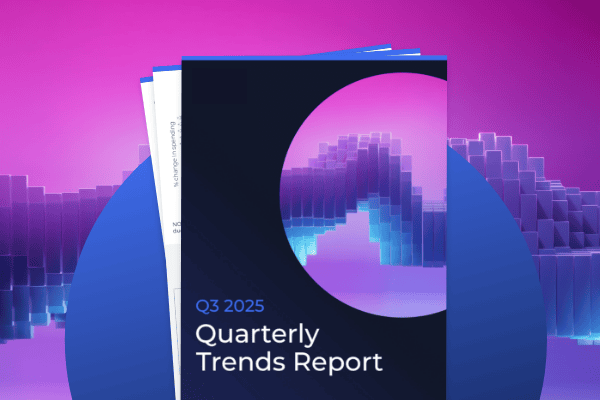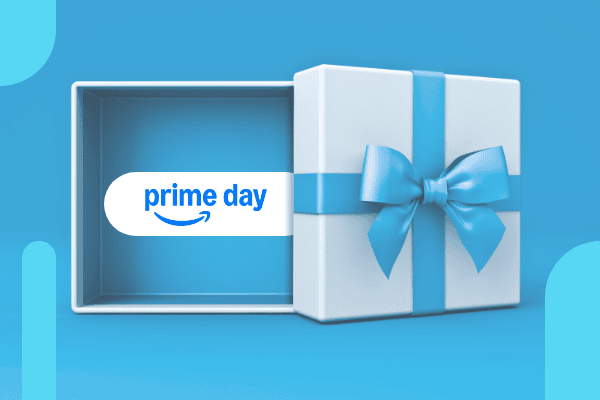Summary
Prime Big Deal Days 2025 delivered record Amazon sales, but its real value lies in the signals it sends about Q4 shopping behavior. Rising ad engagement, cautious spending, and a shift to Amazon DSP reveal what marketers must do now to win in November and December. Smart bundling, creative optimization, and a full-funnel strategy will be key.
Amazon’s October 2025 Prime event is in the books. The headlines: muted. The verdict: mixed.
But here’s the thing: if you’re focused on whether October sales hit your targets, you’re missing the real opportunity. The value of this event goes beyond the revenue it generated; it’s in what the data reveals about consumer behavior heading into November and December, when budgets are higher, stakes are sharper, and every optimization compounds.
Based on exclusive data from the Skai platform, 2025 Prime Big Deal Days was actually the biggest Amazon October sales event on record, and according to Adobe, consumers spent $9.1 billion across US retailers during that time period, a 7.3% increase from 2024. But now all eyes are on the key holiday shopping periods ahead, as Adobe projects that U.S. online holiday sales will reach $253.4B this year, up 5.3% year-over-year, with Cyber Week alone contributing $43.7B.
In that broader picture, the greater long-term value of October’s sales days for advertisers may be the learnings about consumer behavior that can be strategically applied to November and December campaigns.
What really happened when advertisers showed up for Prime Big Deal Days
The retail sales figures are helpful context, but for retail media marketers, the Amazon Advertising data tells the real story. Our analysis draws from Amazon Advertising performance across Skai accounts that spent during both the 2024 and 2025 Prime Big Deal Days October events. This “same-store sales” approach reduces noise and gets to the heart of what really changed year-over-year in advertising performance, not just market-wide shifts.
Here’s what the data revealed:
Growth showed up, but so did economic anxiety
Let’s start with the broader numbers. U.S. ecommerce sales during the event were up nearly 6% year-over-year, while U.S. Amazon Ad spending climbed nearly 7%. That sounds solid until you look at the context. Nearly half (48%) of Prime Big Deal Days consumers said tariffs impacted their purchase decisions, while 29% were more cautious about spending because of the current economic climate.
From an advertising perspective, clicks increased but at a moderate pace. CPC stayed steady. Conversion rates held stable. In other words: solid performance, but subdued energy.
Still, there were bright spots worth paying attention to. And if you know where to look, the patterns reveal exactly what you should do next.
Engagement climbed even as consumers spent carefully
Click-through rates were through the roof during Prime Big Deal Days, continuing a trend we’ve been tracking all year. CTR jumped from 0.22% in 2024 to 0.39% in 2025, a 74.45% year-over-year increase. This isn’t just an Amazon phenomenon. Our upcoming Q3 2025 Quarterly Trends Report shows CTR climbing across Search and Social as well. We saw the same pattern during July’s Prime Day, where CTR hit record levels even as efficiency metrics improved across the board.
What does that mean for you?
Consumers are highly engaged, even when they’re careful with their wallets. They’re clicking, browsing, and considering, but they need the right messaging and value proposition to convert. High CTR with flat conversion signals a disconnect between interest and action. Fix the gap, and you’ll capture revenue your competitors are leaving on the table.
Amazon DSP stole the show as marketers shifted mid and upper-funnel
Here’s where things get interesting. Sponsored Products still commanded the lion’s share of spending, as expected. But ad spend climbed year-over-year because retail media marketers are attacking the mid- and upper-funnel more aggressively this year. They’re leveraging more Amazon DSP while deprioritizing Sponsored Display and Sponsored Brands, shifting budgets away from those formats.
This is a 2025 trend we’ve been tracking all year. ADSP clicks were up 26% driven by CTR improvements, meaning this spend is scaling efficiently with strong engagement. The full-funnel approach Amazon has been pushing for years is finally showing real performance data to back it up, and marketers are responding by moving budget toward DSP to capture awareness and consideration opportunities earlier in the journey.
Average order value dropped 11%, and that’s why returns looked flat
Overall return on ad spend (ROAS) was flat or slightly down compared to 2024. But when we dug into the data, the culprit wasn’t conversion mechanics. CPC and conversion rates both held steady. The issue was something harder to control: average order value. AOV fell 11% year-over-year, from $43.47 to $38.72, according to our data. That single shift explains why efficiency felt off even though the fundamentals looked solid.
Industry data from Numerator shows a similar pattern, with the average Prime Big Deal Days spend per order at $45.42 and 44% of orders placed for $20 or less.
This makes sense when you look at what people were buying. The top categories were Household Essentials (26%), Apparel & Shoes (26%), and Health & Wellness (21%). Practical purchases, not splurges. The top-selling items included Dawn Platinum Powerwash, Premier Protein Shakes, and Lysol Disinfecting Wipes. Essentials dominated.
Your AOV challenge is the canary in the coal mine. Consumers are being cautious, prioritizing needs over wants, and shopping with inflation and economic uncertainty top of mind. You can’t force consumers to spend more per order. But you can influence behavior.
How to turn October’s signals into November wins
Now that you know what shifted in October, here’s how to fine-tune your strategy before Black Friday, Cyber Monday, and the final December stretch. These recommendations are grounded in performance trends, not just theory, and aligned with current platform capabilities.
Push Basket Size Higher with Smart Bundles and Promotions
With AOV down 11%, increasing basket size should be a priority. While marketers can’t directly control spend per order, there are proven tactics to influence it:
- Highlight product bundles and multipacks in Sponsored Brands and Sponsored Display creatives
- Use frequently bought together insights from Amazon product pages to inform bundling strategies
- Promote cart threshold offers like spend $50, save 15% to encourage larger checkouts
- Emphasize multi-item value in your ad messaging, not just individual product features
To identify strong bundling opportunities, start with your top-performing products and review purchase patterns using internal sales data. Look for products that naturally pair together or support a common use case.
Double Down on What’s Working in Creative
Click-through rates are surging, but high CTR only converts if your creative resonates. Lean into creative that’s already performing and adapt for Q4:
- Test seasonal visuals against evergreen ones to find what clicks
- Try urgency cues like order by Dec 20 for guaranteed delivery
- Emphasize practicality and value in messaging, especially for gifting
Rotating creatives and closely tracking performance metrics like CTR and conversion rate can reveal what’s resonating. Once you identify a winning variant, scale it across placements.
Speak to Value-Conscious Shoppers
October’s top-selling categories, essentials and wellness, signal a clear trend: shoppers are cautious. Align your messaging with what matters to them now:
- If your product isn’t a necessity, position it as a smart or practical gift
- Use ad copy that speaks to saving, stocking up, or prepping for the season
- Focus on clarity and utility over aspirational messaging
Review your recent performance to spot which keywords or creatives drove value-seeking behavior. Look for high-performing queries like best deal on [product] or budget-friendly [category], and incorporate those learnings into your holiday campaigns.
Invest in Full-Funnel with Amazon DSP
While Sponsored Products remain a key driver, retail media marketers are finding success further up the funnel. In 2025, we saw more investment in Amazon DSP—and performance followed:
- CTR for DSP campaigns rose year-over-year, showing rising engagement
- Mid- and upper-funnel targeting helped marketers build awareness early
- Brands using full-funnel strategies captured demand before peak season hit
Consider scheduling DSP campaigns during historically high-engagement periods and retargeting audiences like recent browsers or cart abandoners.
Turn Prime Big Deal Days data into your Q4 advantage
Prime Big Deal Days gave you valuable data; now it’s time to act. Your competitors are reacting to the same market conditions you are. The difference will be who adapts fastest and who uses their own data to make those calls. Whether you’re refining creative, reallocating budgets, or testing new audiences, these insights can guide smarter decisions for the campaigns that really matter: November and December.
Connecting performance across Amazon, Walmart, Target, Instacart, and 300+ retail media networks, as well as your paid search and social advertising campaigns, while tying every dollar of spend back to actual sales, is what Skai’s omnichannel platform is built for. Skai’s retail media solutions enable marketers to plan, activate, and measure campaigns across retailers as part of a broader commerce media strategy. AI-powered pacing, product intelligence, and keyword tools help teams meet consumers across the journey with confidence – and with real results.
Ready to see how it works? Schedule a quick demo.
Frequently Asked Questions
Prime Big Deal Days 2025 showed cautious but engaged shoppers. Clicks rose sharply, but lower AOV suggests consumers prioritized essentials.
Focus on bundles and promotions to raise AOV, scale high-performing creative, and invest in Amazon DSP for full-funnel impact.
ROAS was flat mainly due to an 11% drop in AOV. Consumers bought practical items, so cart sizes shrank despite stable conversion rates.







